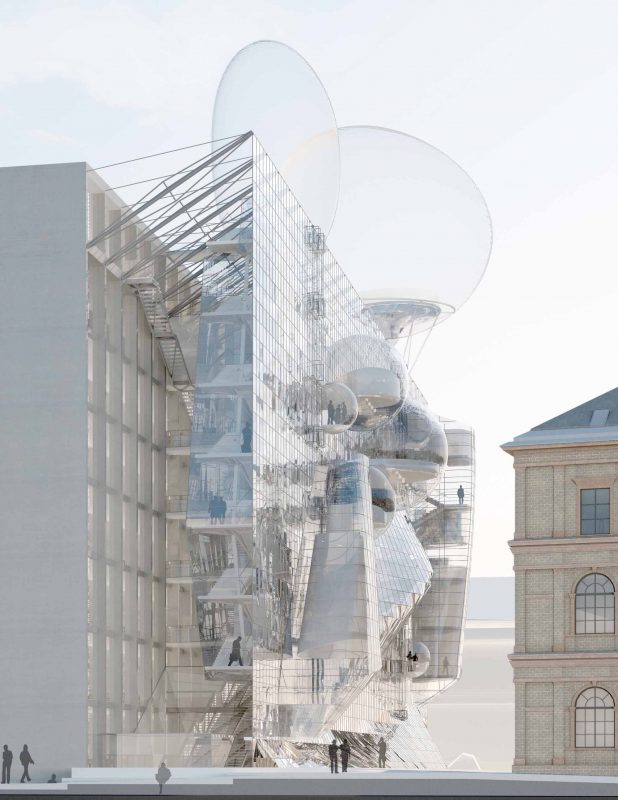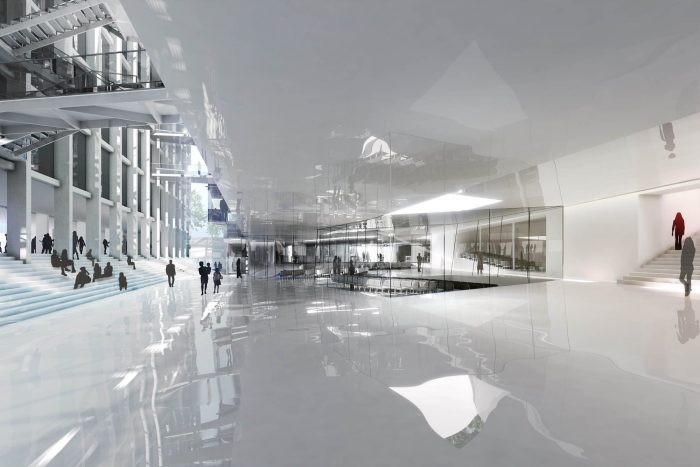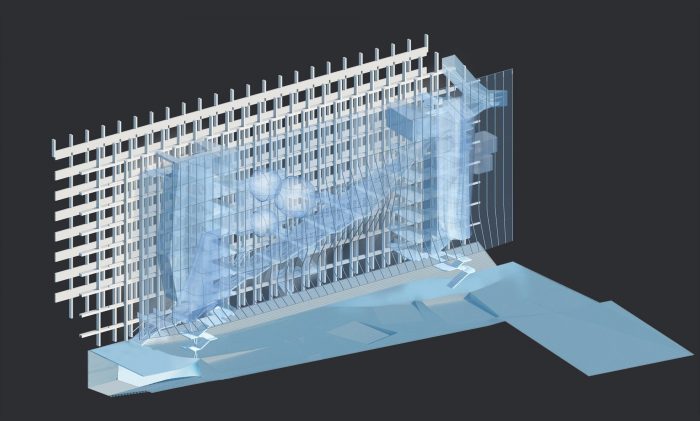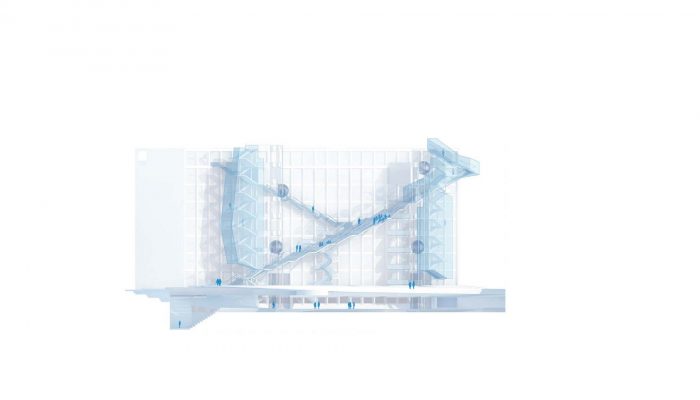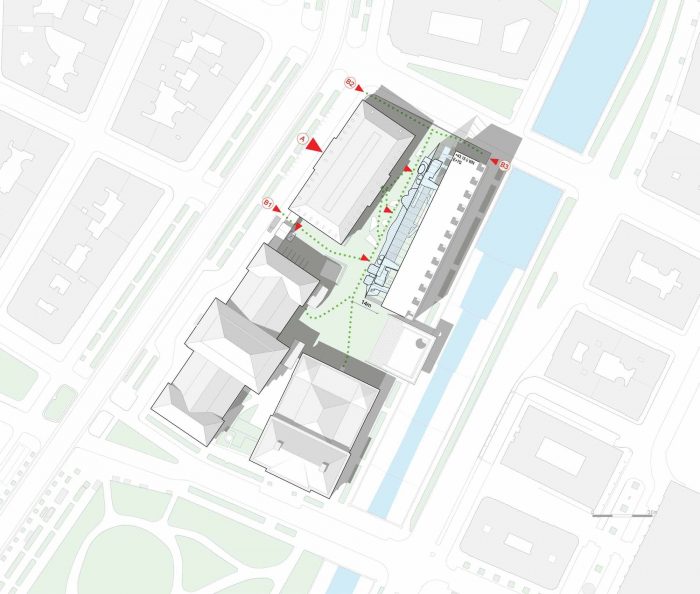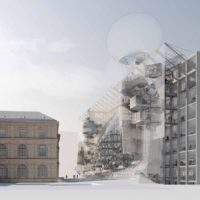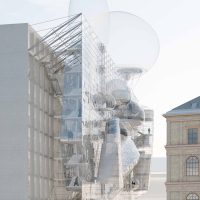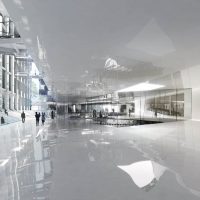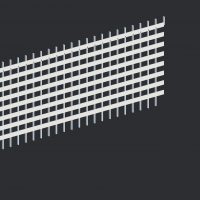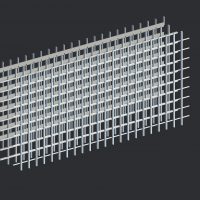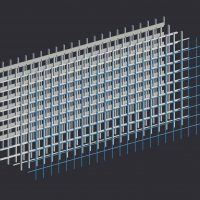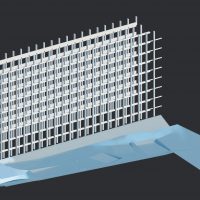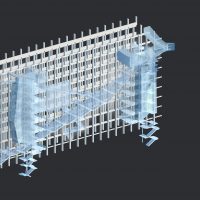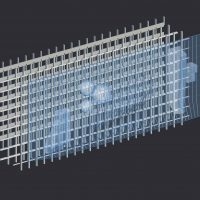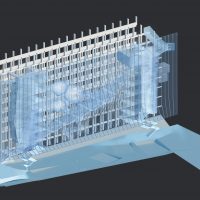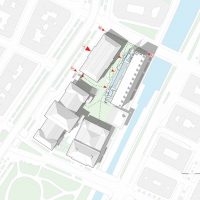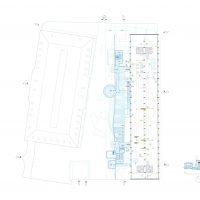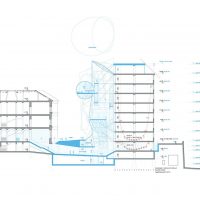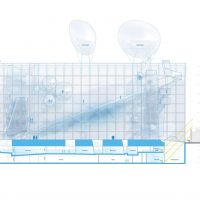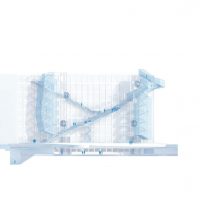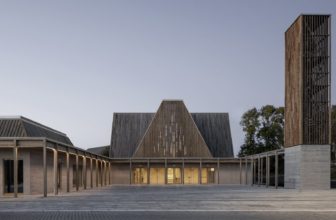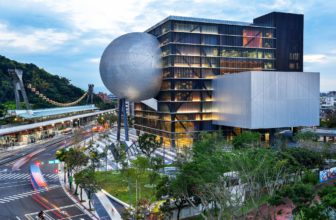University of Applied Arts Wolfgang Tschapeller
Austrian architect Wolfgang Tschapeller has won the first prize in the University of Applied Arts Extension competition within an interesting concept which includes facade-climbing staircases and pneumatic balloons. The proposal re-structures the circulation to gain full flexibility on the entire floor slab, in addition to a remarkable gain of usable floor area, as well as more efficient movement within the building fabric. The resulting space will be used for studios, as well as extended areas for lecture halls, workshops and storage spaces. An internal plaza will also be enclosed behind the extruded facade, while gardens will bridge the spaces between the block and its neighboring context. On the roof of the University two optional, temporary structures are proposed. Two large pneumatic balloons are to be positioned and inflated to signify special events or occasions; in essence acting like flags on a building. This creates a dynamic relationship between the building and its context. More details from the architect after the jump.
Between 1st and 3rd district in Vienna on the Ringstrasse, a few buildings of different authors and times are collected on a block. Some of them serve the purposes of the Museum for Applied Arts and some of them serve the University of Applied Arts. The original urban intent for this group of buildings follows a very fine, subtle and precise idea. Although being part of a block, or standing on a block, they were always meant to keep their independence and autonomy by simultaneously allowing for visibility of the space in between them.
The link building by Schwanzer/Wörle was an unfortunate move. It does not only work strongly against the original urban intent of a loose and open grouping of buildings on a block. It works also against the character of Schwanzer/Wörle´s own design. Ferstel Bau, as well as the Schwanzer/Wörle Bau, are in their essence autonomous objects standing in critical and productive distance to each other. Such a reading is re-proposed in our project. Consequently, the following steps are proposed: Demolition link building, Reconstruction of those parts of the Ferstel Bau and the Schwanzer-Wörle Bau which were destroyed by the insertion of the link building, Activation of the now very well lit areas of the Schwanzer/Wörle Bau.
We are fascinated by the seriality of the Schwanzer/Wörle Bau. The building consists in essence of a series of columns and slabs. By taking out stairs and elevator cores and by repositioning them in front of the serial structure of the Schwanzer/Wörle Bau two essential targets are achieved: Full flexibility on the entire floor slab, Remarkable gain of usable floor area, Improvement of circulation (in economic and spatial terms).
The removal of stair and elevator cores displays a pure serial structure. What remains are solely columns and slabs, ready for multiple functional readings. The shelf-like structure will house the Studios.CAMPUS – WHERE 17 DIFFERENT STUDIOS MEET
In essence we propose 3 main connecting elements to “make” the new Campus of the Angewandte: The interior square connects Ferstel Bau with Schwanzer/Wörle Bau, the garden connects the buildings of the University with those of the Museum, the broadway, a large stair which runs diagonally across the elevation of the Schwanzer/Wörle Bau. The broadway is not only a means of circulation; it is the platform where members and knowledge of the 17 different studios meet. It is the informal marketplace for cross-disciplinary projects.
TEMPORARY STRUCTURES
On the roof of the University two optional, temporary structures are proposed. Two pneumatic balloons indicate and signal special occasions at the Angewandte to the surrounding City. Raised trans-parent balloons mean a special day, like flags on a building. We are fascinated by seriality of the Schwanzer/Wörle Bau. The building consists in essence of a series of columns and slabs. By taking out stairs and elevator cores and by repositioning them in front of the serial structure of the Schwanzer/Wörle Bau two essential targets are achieved: full flexibility on the entire floor slab, a remarkable gain of usable floor area, improved circulation (in economic and spatial terms).
Architects: Wolfgang Tschapeller
- Courtesy of Wolfgang Tschapeller
- Courtesy of Wolfgang Tschapeller
- Courtesy of Wolfgang Tschapeller
- grid 01
- grid 02
- grid 03
- common space diagram
- stairs diagram 01
- grid elements diagram
- grid 07
- site plan
- plan 01
- section 01
- section 02
- Courtesy of Wolfgang Tschapeller


